ZHARI DISTRICT, Afghanistan — Here in the birthplace of the Taliban, children would climb up on Joe DeNenno and hang off his Army-issued rucksack as if it were a jungle gym. “Ruckriders,” he called them.
The 24-year-old first lieutenant didn’t just play with the kids. He also tutored them. He even convinced his commanding officer to spend some of the money the military had earmarked for winning hearts and minds on building the children a school.
In that summer of 2011, as he helped negotiate with local elders and the Afghan Ministry of Education, the fighting intensified. Three men in his unit fell to gunfire, and three more were blown up by roadside bombs. And Afghans who helped the Americans, he recalled, lost their lives “in just brutal torture, decapitated, terrible ways.”
Still, by early October, a dozen of DeNenno’s students — a few no taller than the shovels in their hands — smiled alongside U.S. soldiers, local security forces, and government officials, all gathered to break ground on a new school in the little village of Kandalay.
An Army press release lauded the groundbreaking as important “for the future of the children.” For DeNenno, it was an “antidote” to the bloodshed and “the rut of chasing this specter of victory.” It felt, he said, “like progress.”
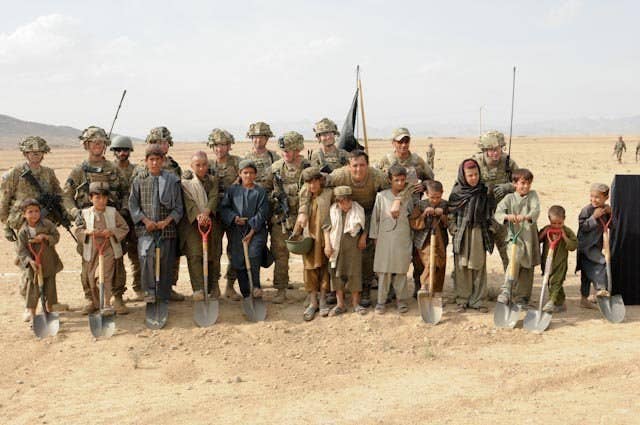
Nearly four years later, water seeps through the leaky roof and drips onto students in this more than $250,000 construction. Doors are cut in half; some are missing altogether. There is no running water for the approximately 200 boys — and zero girls — who attend. But the school did enrich a notorious local warlord. In exchange for donating the land on which the school sits, he extracted a contract from the U.S. military worth hundreds of thousands of dollars.
Over and over, the United States has touted education — for which it has spent more than $1 billion — as one of its premier successes in Afghanistan, a signature achievement that helped win over ordinary Afghans and dissuade a future generation of Taliban recruits. As the American mission faltered, U.S. officials repeatedly trumpeted impressive statistics — the number of schools built, girls enrolled, textbooks distributed, teachers trained, and dollars spent — to help justify the 13 years and more than 2,000 Americans killed since the United States invaded.
But a BuzzFeed News investigation — the first comprehensive journalistic reckoning, based on visits to schools across the country, internal U.S. and Afghan databases and documents, and more than 150 interviews — has found those claims to be massively exaggerated, riddled with ghost schools, teachers, and students that exist only on paper. The American effort to educate Afghanistan’s children was hollowed out by corruption and by short-term political and military goals that, time and again, took precedence over building a viable school system. And the U.S. government has known for years that it has been peddling hype.
BuzzFeed News exclusively acquired the GPS coordinates and contractor information for every school that the U.S. Agency for International Development (USAID) claims to have refurbished or built since 2002, as well as Department of Defense records of school constructions funded by the U.S. military.
BuzzFeed News spot-checked more than 50 American-funded schools across seven Afghan provinces, most of which were battlefield provinces — the places that mattered most to the U.S. effort to win hearts and minds, and into which America poured immense sums of aid money.

At least a tenth of the schools BuzzFeed News visited no longer exist, are not operating, or were never built in the first place. “While regrettable,” USAID said in response, “it is hardly surprising to find the occasional shuttered schools in war zones.”
At the schools that were still running, BuzzFeed News found far fewer students than were officially recorded as enrolled. Girls, whom the U.S. particularly wanted to draw into formal schooling, were overcounted in official records by about 40%.
USAID program reports obtained by BuzzFeed News indicate the agency knew as far back as 2006 that enrollment figures were inflated, but American officials continued to cite them to Congress and the American public.
As for schools it actually constructed, USAID claimed for years that it had built or refurbished more than 680, a figure Hillary Clinton cited to Congress in 2010 when she was secretary of state. By 2014, that number had dropped to “more than 605.” After months of pressing for an exact figure, the agency told BuzzFeed News the number was 563, a drop of at least 117 schools from what it had long claimed.
The military, the other main source of U.S. funding for education, said it does not know how many schools it has funded since the war began. Last month, the Pentagon told BuzzFeed News that since 2008 the military had funded the construction or refurbishment of 786 schools. This month, a spokesperson revised that number down to 605 and said the new number encompassed “a variety of projects that included new construction, refurbishment, or simply donating supplies such as desks or textbooks.”
As for the schools America truly did build, U.S. officials repeatedly emphasized to Congress that they were constructed to high-quality standards. But in 2010, USAID’s inspector general published a review based on site visits to 30 schools. More than three-quarters suffered from physical problems, poor hardware, or other deficiencies that might expose students to “unhealthy and even dangerous conditions.” Also, the review found that “the International Building Code was not adhered to” in USAID’s school-building program.
This year, BuzzFeed News found that the overwhelming majority of the more than 50 U.S.-funded schools it visited resemble abandoned buildings — marred by collapsing roofs, shattered glass, boarded-up windows, protruding electrical wires, decaying doors, or other structural defects. At least a quarter of the schools BuzzFeed News visited do not have running water.
Back in 2010, USAID told the inspector general that whatever the condition of the buildings, almost all the schools in that review were being used for “the original intended purpose” — that is, for educating students. Today, the agency echoed that point: Monitoring visits by a contractor, it said, showed that 85% of the USAID schools BuzzFeed News inspected “were operating as intended in 2013–14.”
Once schools are finished, USAID and the military hand them over to the Afghan government, which becomes responsible for maintaining them.
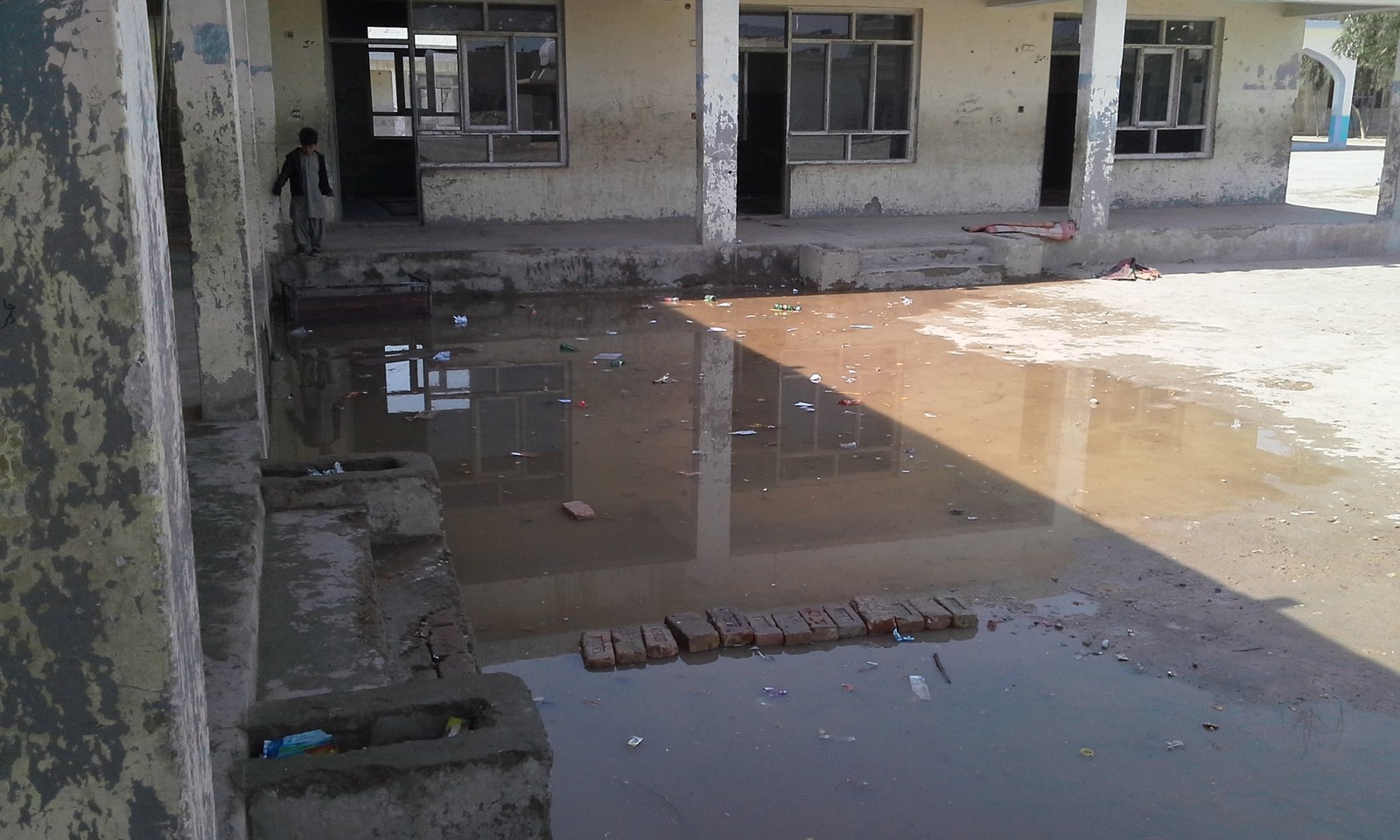
By obtaining internal records from the Afghan Ministry of Education, never before made public, BuzzFeed News also learned that more than 1,100 schools that the ministry publicly reported as active in 2011 were in fact not operating at all. Provincial documents show that teacher salaries — largely paid for with U.S. funds — continued to pour into ghost schools.
Some local officials even allege that those salaries sometimes end up in the hands of the Taliban. Certainly, U.S.-funded school projects have often lined the pockets of brutal warlords and reviled strongmen, which sometimes soured the local population on the U.S. and the Afghan government.
At schools America funded, the education provided varies wildly, from math and science to, at one school the U.S. military claimed it built, little more than memorizing the Qur’an in a cramped mosque. Still, the U.S. effort has rectified one of its past mistakes. When Afghanistan was occupied by the Soviet Union, the U.S. funded school curricula that were staunchly anti-Soviet but also infested with jihadi ideology that al-Qaeda and the Taliban later used against America. Since 2002, U.S. funding has largely replaced those teaching materials by flooding the country with new textbooks.
And, to be sure, American-funded teachers, curricula, and buildings have helped provide at least some education to millions of Afghan children. Especially in Kabul and other major cities, some American-built schools are functioning well. Many of the students at these urban schools are girls.
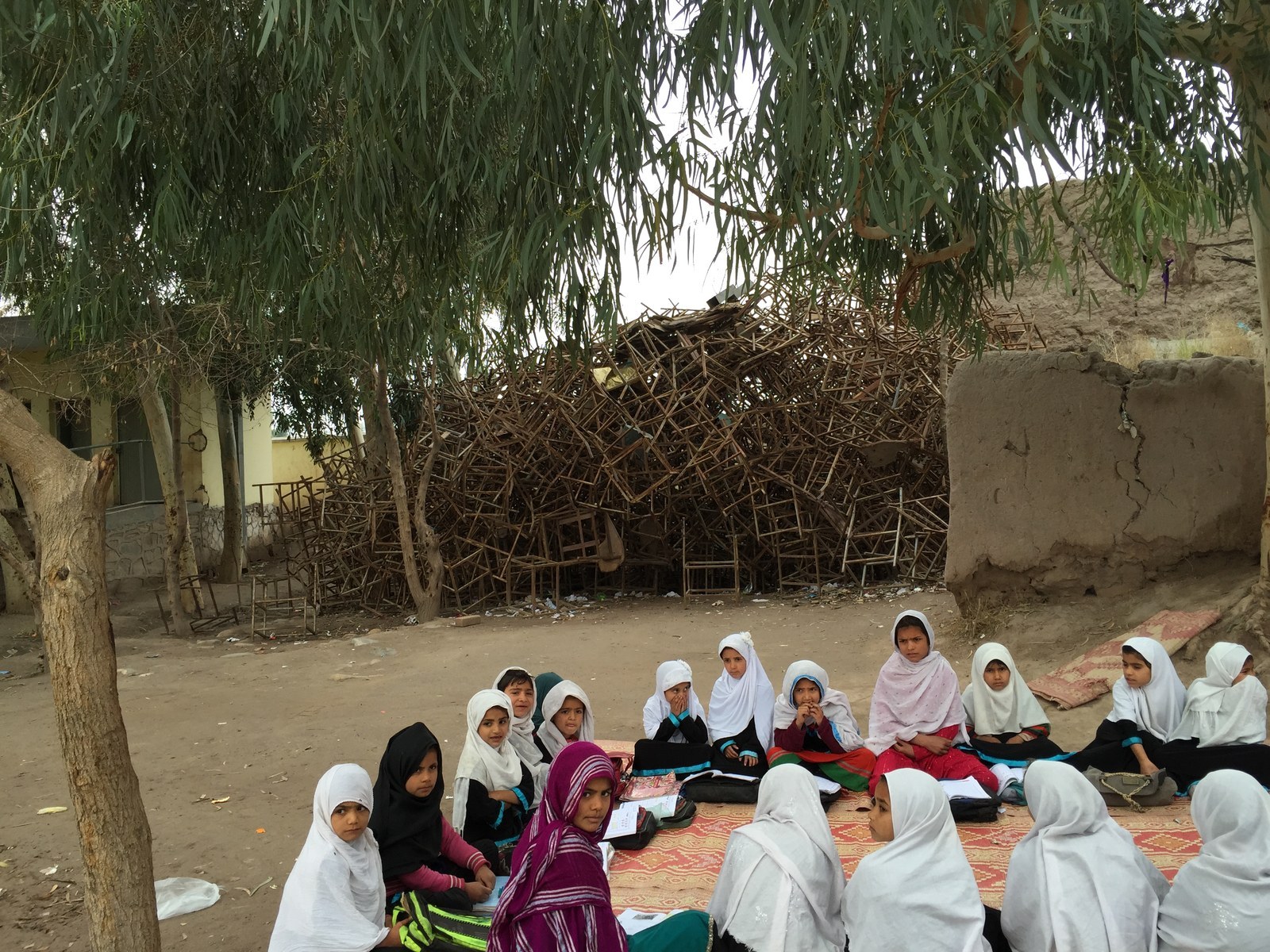
“When USAID began working in Afghanistan, the country was devastated by decades of conflict,” the agency said in a statement to BuzzFeed News. While it acknowledged that “more work needs to be done,” it said, “millions of Afghan boys and girls are in school, and as a result of USAID and the international community’s investment, thousands more [are] attending universities and entering Afghanistan’s growing workforce."
But in the areas where most U.S. funding was concentrated — territories that were key to winning the war — American efforts have fallen woefully short of the grand claims the government made, claims that it knew were false. In some cases, American efforts to provide education have actually backfired, embittering local people rather than winning their hearts and minds. What went wrong is a story of overhyping in Washington, of noble intentions going astray in a society America did not understand, and of the pitfalls of using humanitarian aid and “soft power” to support military and political goals.
Omar Qargha, a former USAID program manager who worked on education in Afghanistan for years, watched the military’s counterinsurgency goals steadily creep into the agency’s work. USAID officials and contractors were summoned to presentations by generals, who asked how the agency’s work fit into the military’s counterinsurgency strategy.
“The purpose was to get out a lot of good numbers, really quickly,” he said. “You needed a good story. You needed a win.”
Over the last decade, report after report has chronicled the corruption and waste that squandered taxpayer dollars across many U.S. programs in Afghanistan. But American education efforts — long seen as a shining success — have gone mostly unexamined, a truth acknowledged even by one of the U.S. officials who has investigated corruption in Afghanistan.
"No one wants to take a hard look at education," said John Sopko, the special inspector general for Afghanistan Reconstruction, "for fear it might turn out to be less than it is cracked up to be.”
One place where it's a lot less than it's cracked up to be is the province where America poured more aid money than almost any other: Kandahar, home to Zhari district, where DeNenno's school sits.
“He was our warlord”
Sitting on a flat, arid plain — dun-colored in winter and summer alike — Zhari’s mud houses are home to opium traffickers, warlords, and supporters of the Taliban, which formed here in 1994. The district straddles Highway 1, a strategic artery connecting Kandahar City, Afghanistan’s second-largest city, to the capital Kabul and other major urban centers.
By 2009, the Taliban resurgence had reached Zhari. The district was the gateway to Kandahar City, a devastating coup if insurgents could capture it. Over the next year, thousands of American soldiers deployed to the area to protect Kandahar. The fight was vicious, and by 2011, reinforcements were pouring in, including Fort Drum’s Third Brigade Combat Team of the 10th Mountain Division — DeNenno’s unit.
When he arrived at the combat outpost, DeNenno noticed the children almost right away. Without a school to go to, about a dozen hung around the base, lured by a cash-for-work program. By March 2011, on his own time, he and a translator had started tutoring the kids in basic literacy in Pashto, the local language.
On a marker board, their small hands practiced writing the alphabet, which DeNenno had learned in college and in a Pashto class at Fort Drum. He sent photos to his schoolteacher mother, back in rural Pennsylvania, who pitched in by organizing donations of lessons, pencils, paper, and crayons.
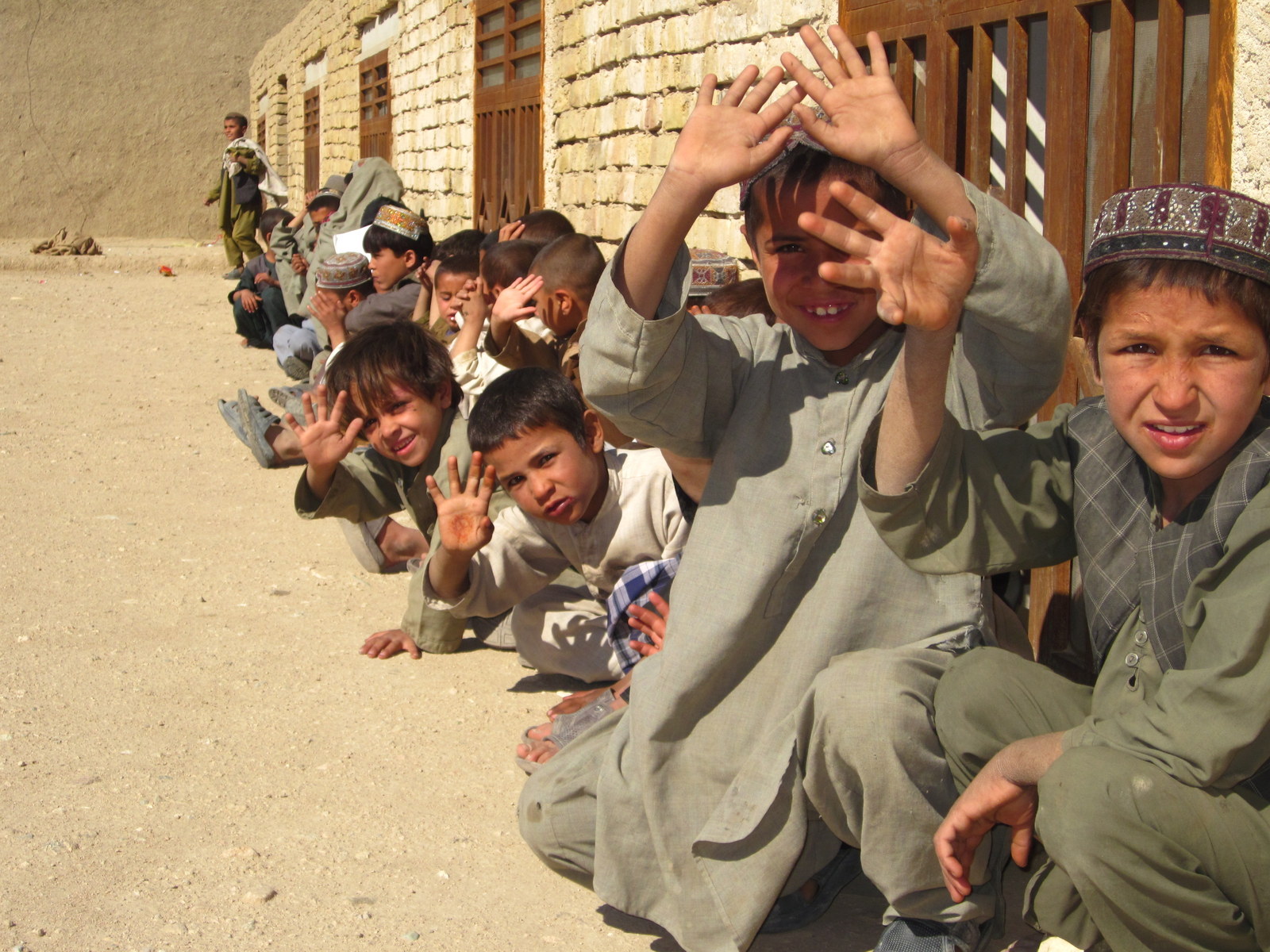
Within a month, nearly 75 eager, clamoring students were showing up, which DeNenno believed would keep them from the Taliban and give them a real future. “Call me a cynic, but I think the current generation that is in their thirties and forties, it’s too late,” he said. “Even in the midst of terrible atrocities, the kids are still wide-eyed.”
But their presence on base posed a danger: If Afghan children were killed there, the backlash from the community could be explosive. Yet when he told the kids that he couldn’t tutor them anymore, he recalled, “they all started crying.”
As part of the U.S. counterinsurgency strategy, officers could spend cash lavishly with minimal oversight on humanitarian projects, part of the Commander’s Emergency Response Program, or CERP. The point: Win over locals by giving them things they wanted — clinics, schools, roads. So DeNenno had no trouble getting $150,000 to renovate a building near the base to serve as a temporary school.
As he looked for a place to build a permanent one, DeNenno began negotiating with the Afghan education ministry and local leaders. And that plunged him straight into Afghanistan’s infamous corruption and tangled history — which, like so many Americans, he understood only dimly.
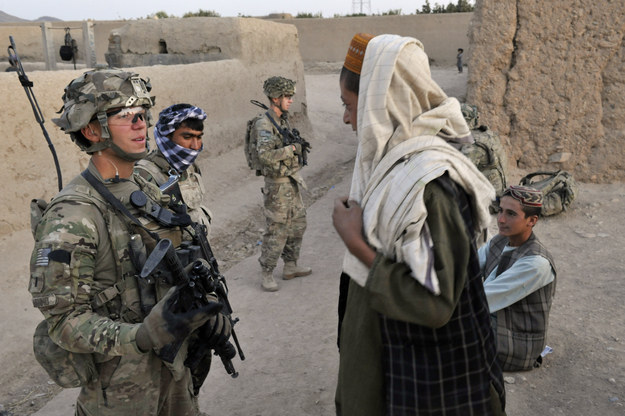
Afghanistan’s long war against the Soviet occupation fomented roving, well-armed mujahideen militias. After defeating the Soviets in 1989, they turned on each other — jockeying for money and influence by setting up checkpoints, robbing, raping, and pillaging. They were no longer known as mujahideen, but as topakiyan, or warlords.
Among them was Habibullah Jan, who seized land in what is now Zhari district. Habibullah Jan set up checkpoints along the critical Highway 1, and the money he amassed from his checkpoint “taxes” brought him more arms and more men, but also a reputation for theft and brutality. Many locals loathed him.
In spring 1994, a warlord tied to a trio of commanders including Habibullah Jan kidnapped two women from a checkpoint near the home of a cleric named Mullah Omar. Enough was enough. Mullah Omar gathered a band of religious guerrilla forces to free the women, only to find their naked corpses at the checkpoint. Fueled by the community’s outrage, they purged the area of the hated warlord and imposed Islamic law and order. The Taliban was born, with Mullah Omar at the helm. Within two years, the Taliban had seized Kabul.
Habibullah Jan had fled the country, but when the Americans overthrew the Taliban in 2001, he returned and reimposed his checkpoints. With more than 2,000 men under his command and, soon, a seat in parliament, he became the most powerful man in Zhari. When his old foe the Taliban began to surge in 2005, the Americans turned to him for help.
To put it plainly: The U.S. allied itself with a warlord so oppressive and kleptocratic that he helped create the Taliban in the first place.
When Habibullah Jan was killed in 2008, his brother and trusted commander Haji Lala took over. He controlled a mix of police and militia forces, according to numerous Western and Afghan sources, and won security contracts from the Americans. By 2011, the year DeNenno arrived, Zhari had the largest local police force of any district in Afghanistan. Those police ran checkpoints, where, just as before, they shook down local residents.
Under Haji Lala’s watch, Zhari’s police and militias have repeatedly been accused of torturing suspects and massacring civilians. One district official who was asked to collect the body of a 22-year-old man arrested by the police on suspicion of planting a bomb found the corpse riddled with marks of torture, according to a recent International Crisis Group report. “When they behave like this,” the official said, “the ordinary people are creating their own militias to guard against” the local police.
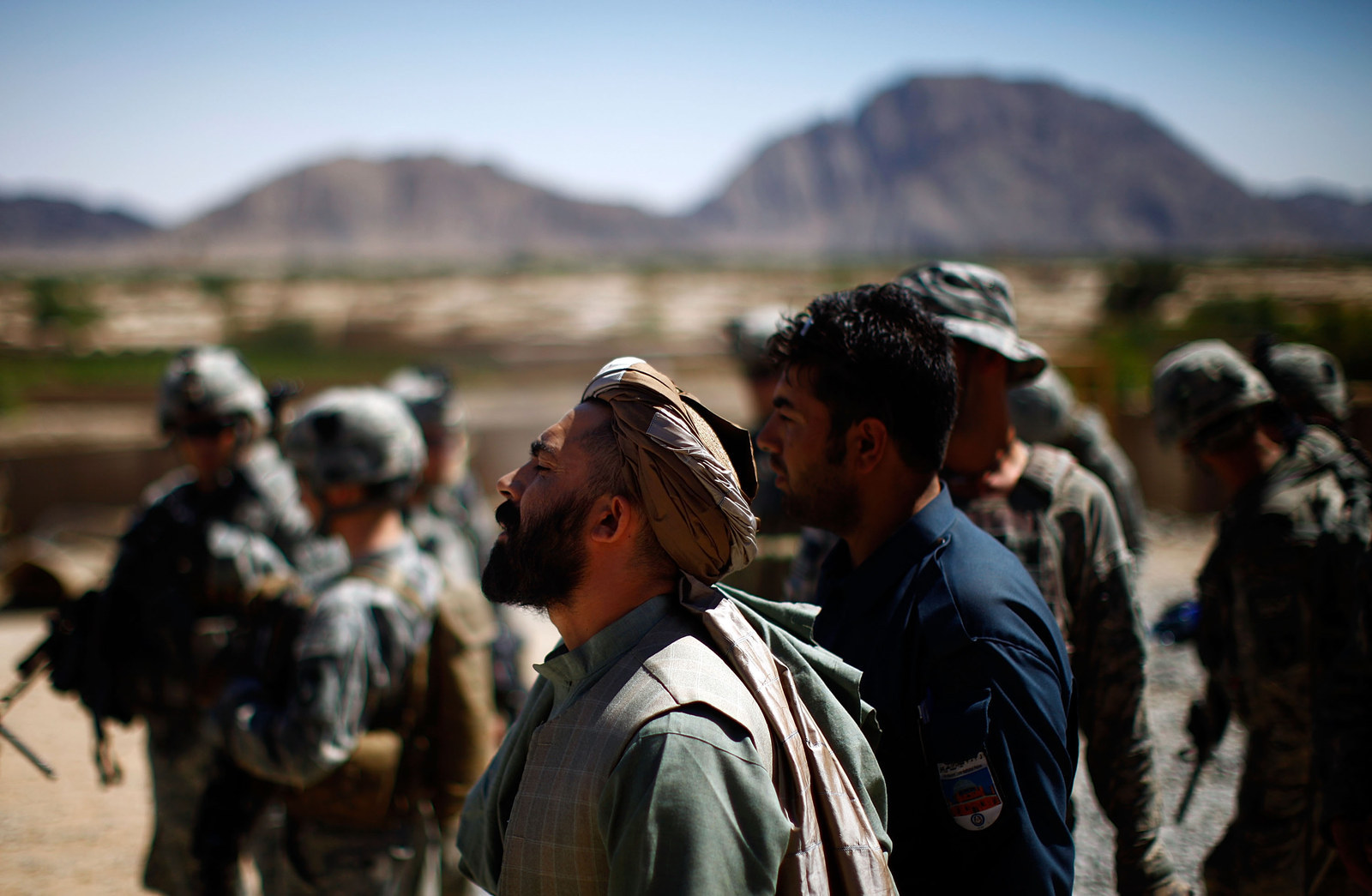
Reached by cell phone, Haji Lala denied having any armed men under his control, let alone engaging in human rights abuses.
Few American soldiers knew that Haji Lala and Habibullah Jan were brothers, let alone of Habibullah Jan’s role in fomenting the Taliban. “I liked Haji Lala,” a soldier in DeNenno's unit said. “I'm pretty sure he did some bad stuff, but for us he was helpful.” He added, “I knew he was a warlord, but he was our warlord.”
Sort of. In fact, while Haji Lala denies it, he had a reputation for playing both sides. As DeNenno put it, he “would talk offline” with Taliban commanders.
One of the most common payments the military made was compensation. If U.S. soldiers killed an innocent bystander, or blew up a civilian’s house, or killed someone’s sheep, commanders would pay compensation. The amounts were often modest — from less than $100 to more than $25,000 — but in total they added up to more than $2.5 million, from which strongmen could take a cut. DeNenno said that Haji Lala would sometimes tell the Taliban, “Go blow up this area because we wanna get the Americans to pay for it.”
Still, Haji Lala controlled a pro-government militia and was a leader of the Alizai, the largest tribal group in Zhari. The Americans couldn’t afford to lose him fully to the Taliban. He was, as DeNenno puts it, a “pain in the butt.” As it would turn out, he was also the man DeNenno would need to build his school.
“The numbers gained a life of their own”
When the Taliban fell, American officials estimated that only about a third of school-aged children were officially enrolled in school, almost none of them girls. So when in April 2002 President George W. Bush announced an ambitious agenda to rebuild Afghanistan, a cornerstone was education for boys and girls.
The challenges were epic. Many poor Afghan families keep their children out of school so they can work. Vast swathes of the population believe girls should not be educated. And, of course, the American effort to jump-start education occurred in the midst of war. Monitors could not visit many schools because of the danger, and several schools BuzzFeed News visited had been destroyed by bombs or shelling.
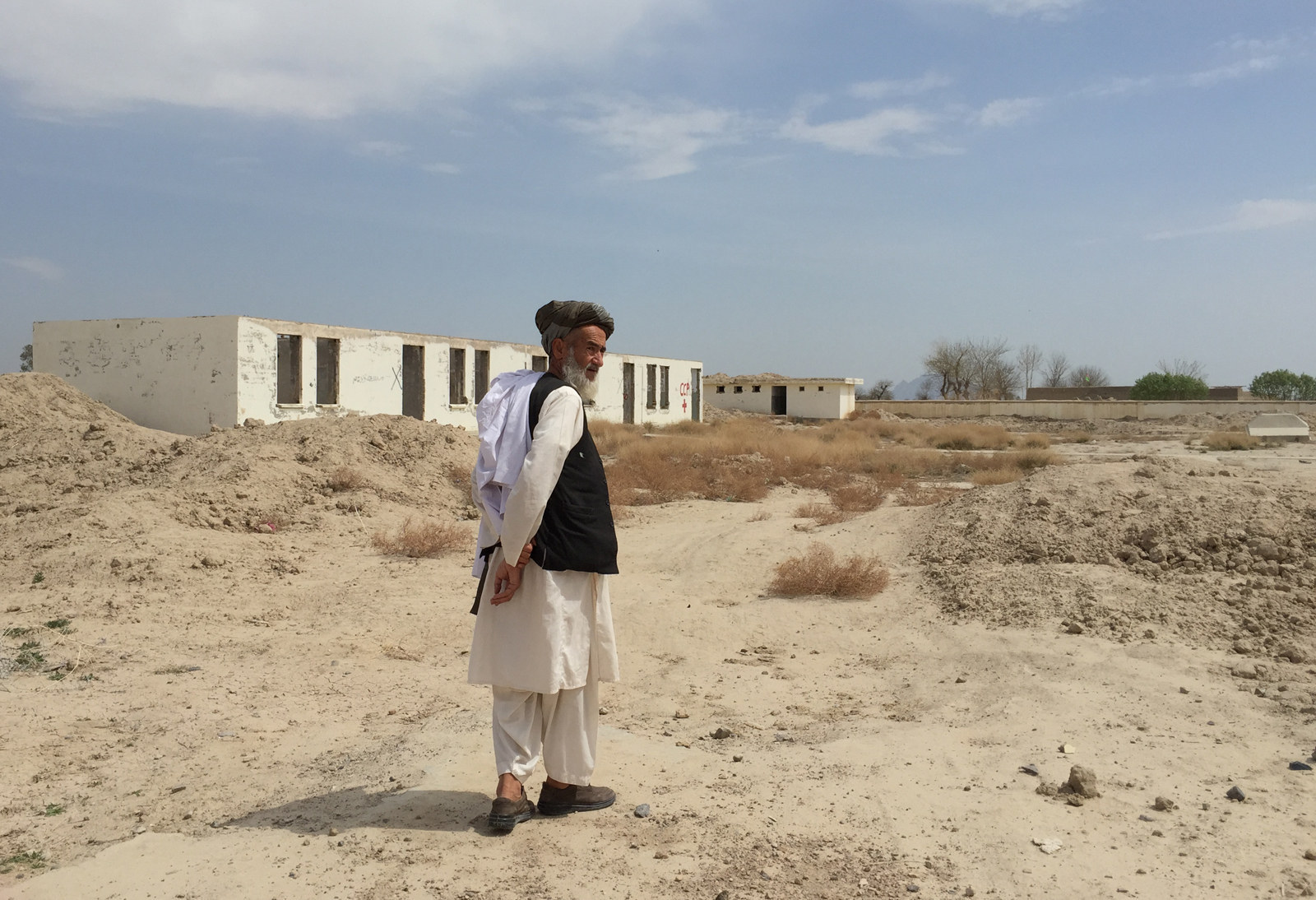
Still, the money spigot opened, and to date USAID has spent more than $750 million on efforts such as constructing schools, training teachers, and building up the fledgling Afghan Ministry of Education.
But the goal was never just to educate children. Education was also a means to advance America’s short-term military and political objectives. In 2003, a National Security Council–led “Accelerating Success” program demanded that USAID hasten its work and complete 314 schools by June 2004. The reason: The U.S. wanted achievements — statistics — to extol ahead of the Afghan presidential election.
As a result of the NSC directive, USAID Director Patrick Fine wrote in an October 2004 internal memo, first obtained by the Washington Post, “awards were made without having design specifications, without agreed sites selected or surveyed or a process to do this, and without adequate consultation with either the [Ministry of Education or Ministry of Health] or the beneficiary communities.” The target numbers, he continued, “had gained a life of their own and were driving USAID to continue to rush the process.”
Profiteers exploited that rush. A full reckoning of the waste and outright fraud has never happened, in part because cases of corruption have often been hidden for years.
When an accountant went to federal investigators in 2006 with evidence that one of USAID’s largest contractors, Louis Berger Group, had been defrauding the agency of millions for years, the investigation was kept under federal seal until late 2010. Only then did the Justice Department reveal that two executives had pleaded guilty to fraud and announce the deal it had reached behind closed doors: The company as a whole would avoid criminal charges and be allowed to continue winning government contracts in exchange for implementing new financial controls and paying nearly $70 million in fines. Since the whistleblower came forward, USAID has awarded the company contracts worth more than 10 times what it was fined.
BuzzFeed News uncovered another case of corruption long obscured from public view.
In May 2004, during the agency’s rush to build schools, a Minnesota-based Christian humanitarian group called Shelter for Life International received a $14 million contract from USAID to build 32 schools and 20 clinics. As is common with such contracts, Shelter for Life didn’t carry out the work itself; instead, it subcontracted to Five Stones Group, a for-profit company.
By July, however, Shelter for Life “didn’t like what they were seeing,” as one former employee put it, and suspended the contract, demanding that the funds already advanced be returned or accounted for. Auditors learned that Five Stones implementer Timothy Allish spent hundreds of thousands of dollars on luxuries such as moving into and renovating a mansion and buying pricey cars, according to the former Shelter for Life employee, who spoke on condition of anonymity. Though Shelter for Life was able to seize back some of the assets from Allish, including four Land Cruisers and six Hiluxes, according to the former employee, it failed to recover nearly $200,000 in additional funds.
Allish did not respond to repeated attempts to reach him by phone, text, and email, as well as through relatives.
USAID told BuzzFeed News that it had “requested a full repayment of the funds,” which Shelter for Life said it is still paying back in monthly installments. USAID also said that in 2010 it added a new monitoring program that would retroactively check all construction projects it had funded in Afghanistan — though in practice, monitors didn’t visit many projects because of security threats.
That might be one reason the agency did not know what happened to the Nimatullah Khan Primary School, built by Shelter for Life in Kandahar, the province where DeNenno served. It was completed at a cost of $150,000, handed over to the Afghan government in September 2005, and sits in the little village of Nawabad. At least it does in USAID’s records.
Locals, as well as current and former district education directors, say this school never existed in Nawabad. True, there is a primary school in the village — in a rented house made entirely out of mud.
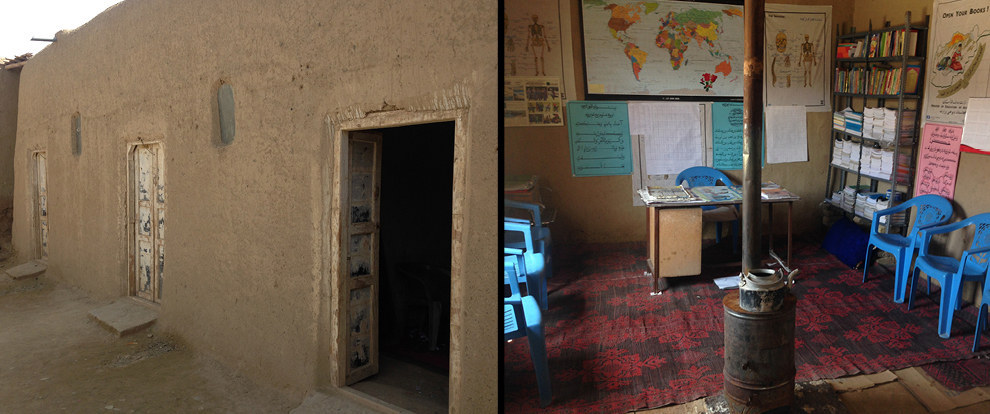
When BuzzFeed News told USAID about its findings, the agency said that the school had been visited by a third-party monitor but did not say when. A scheduled second inspection wasn’t carried out “due to insecurity in the area,” the agency said, but added that satellite imagery showed the school had “no visible damage.” Shelter for Life provided documents citing what it said was the GPS location of the Nimatullah Khan School and photos of its construction.
Neither gave any indication that they knew what BuzzFeed News discovered: The GPS coordinates were not of a school named Nimatullah Khan in Nawabad but of another school, with another name, located in another village that just happens to be home to the notorious Kandahar Police Chief Abdul Raziq. A sign above its entrance makes no mistake about whom it’s named after: “Abdul Raziq Middle School.”
With command of a large contingent of the national police and other armed militias, Raziq is widely considered the most powerful warlord in southern Afghanistan. He is also accused of extrajudicial killings, drug trafficking, and torture, documented by human rights groups and journalists for years. Raziq couldn’t be reached for comment but has previously denied the accusations.

How the school wound up in his family’s village instead of in Nawabad is unclear. What is clear is that Abzul Raziq Middle School sat empty for three years after it was built, because there were no residents in the area to attend it. It was, as the district’s former education director explained, “far away from villages; it was just in [the] desert.” Meanwhile, the children of Nawabad continue to attend their tiny mud school.
From 2008 to at least August 2013, USAID claimed it had built or refurbished more than 680 schools in the country since the U.S. invaded — a figure the agency sometimes used to counter bad press and that it repeated on Twitter and in blog posts, press releases, and a report from USAID's Office of the Inspector General, not to mention in Secretary Clinton’s submission to Congress.
But over the last two years, USAID has quietly whittled away at that number without explaining what happened to the more than 115 schools it no longer says it built or refurbished. After BuzzFeed News pressed for an answer, Larry Sampler, the head of USAID’s Office of Afghanistan and Pakistan Affairs, said the agency had “revised its operational definition of school construction” to a “stricter definition.”
“You buy people’s favor”
As DeNenno went about looking for where to build the permanent school, the Zhari district governor, Niaz Mohammad Sarhadi, knew the perfect place for it — a spot right off the highway, not far from the U.S. base. They convened a series of shuras, or meetings with local elders, to move forward. And that’s when Haji Lala stepped in.
He said the land was his.
In Afghanistan, written land deeds rarely exist, and it’s not clear if he had one. But Haji Lala definitely had two things far more important than any piece of paper: control of a militia, and an occupying army — the Americans — desperate for an ally. Haji Lala wanted to sell the land, but the Ministry of Education insisted that it be donated.
Haji Lala stood his ground, and the project came to a standstill. But the war didn’t. The commander of a Taliban cell was targeting and killing Afghans working for the Americans. In just a few weeks in August and September, DeNenno said, the Taliban commander killed five informants he had relied on.
Not long after that, a U.S. colonel, Patrick Frank, came over to Haji Lala’s compound for tea. According to five U.S. and Afghan sources, he departed with a deal for enough land to build both a school and a clinic. All it took was a little grease.
“I asked them to give me the contract for the health clinic,” Haji Lala explained. “They agreed.”
Not long after that, Haji Lala's construction company won a $375,000 military contract for the clinic, to be built next to the school. The clinic was still under construction, Gov. Sarhadi said, when locals began coming to him to complain about the quality of work, and he admonished the clinic contractors for using secondhand bricks. Haji Lala said the building was constructed well. Through a military spokesperson, Col. Frank declined to comment, and the Pentagon didn’t answer questions about the clinic or the school.
The clinic opened in August 2012. In October, military records show, it failed a quality inspection, and in December — under a “directive of fix what’s broke” — it got more than $57,000 in additional funding for improvements.
“No one likes to say this,” DeNenno explained, “but there is a part of war where you are buying people's favor. It's inevitable at some point.”
In Afghanistan, it was inevitable at many points, as America injected vast amounts of cash into a society it didn’t understand and that was fractured by decades of war and corruption.
Less than 20 miles southeast of DeNenno’s school, Deh-e-Bagh Primary School was recorded in U.S. military records as completed in 2012, at cost and up to standard. The nine-room building, along with latrines and a security wall, would allow children to go to school regularly and provide a “tangible source of community pride and legitimacy” for local elders and the Afghan government, the records say.
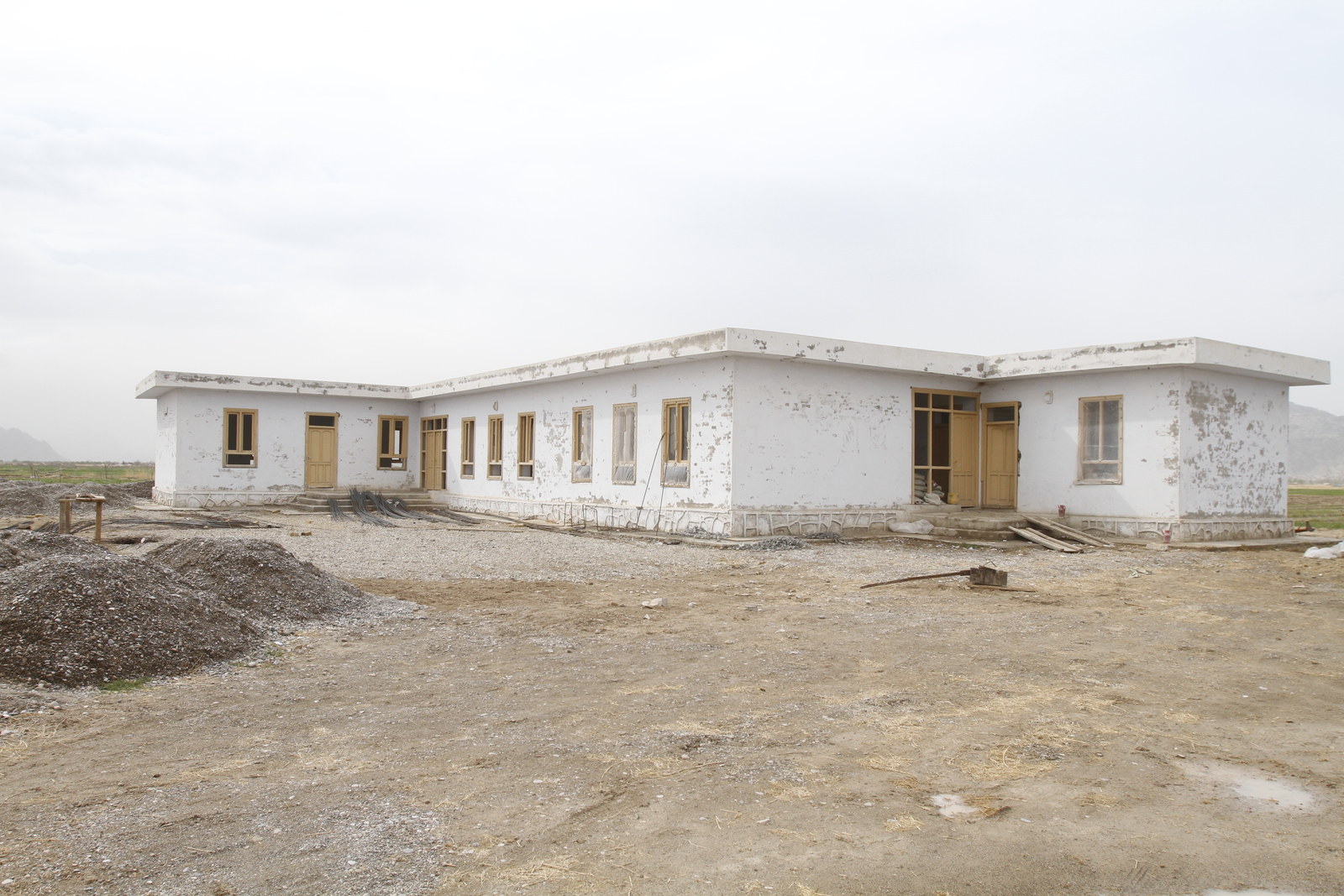
But Deh-e-Bagh Primary School has never seen a single student. Only partially completed in 2012, its doors have never opened. There are no latrines, no running water. Without a security wall surrounding it, the building has deteriorated. Windows are smashed. Rooms are littered with construction materials.
U.S. military officials in Kabul confirmed the Deh-e-Bagh school construction was funded with Pentagon dollars but added: “We do not have further information about the actual administration of the project, so we are not able to provide additional background on this for you.”
BuzzFeed News investigated and discovered a sorry tale of U.S. education money going to local strongmen, no matter how corrupt. In 2011, Ghulam Haider, a landowner in Deh-e-Bagh, agreed to donate a plot. The district governor, Amadullah Nazek, suggested he team up with a local firm, Fatay Khan Construction Company, or FKCC. That company just happened to be owned by the governor’s brother.
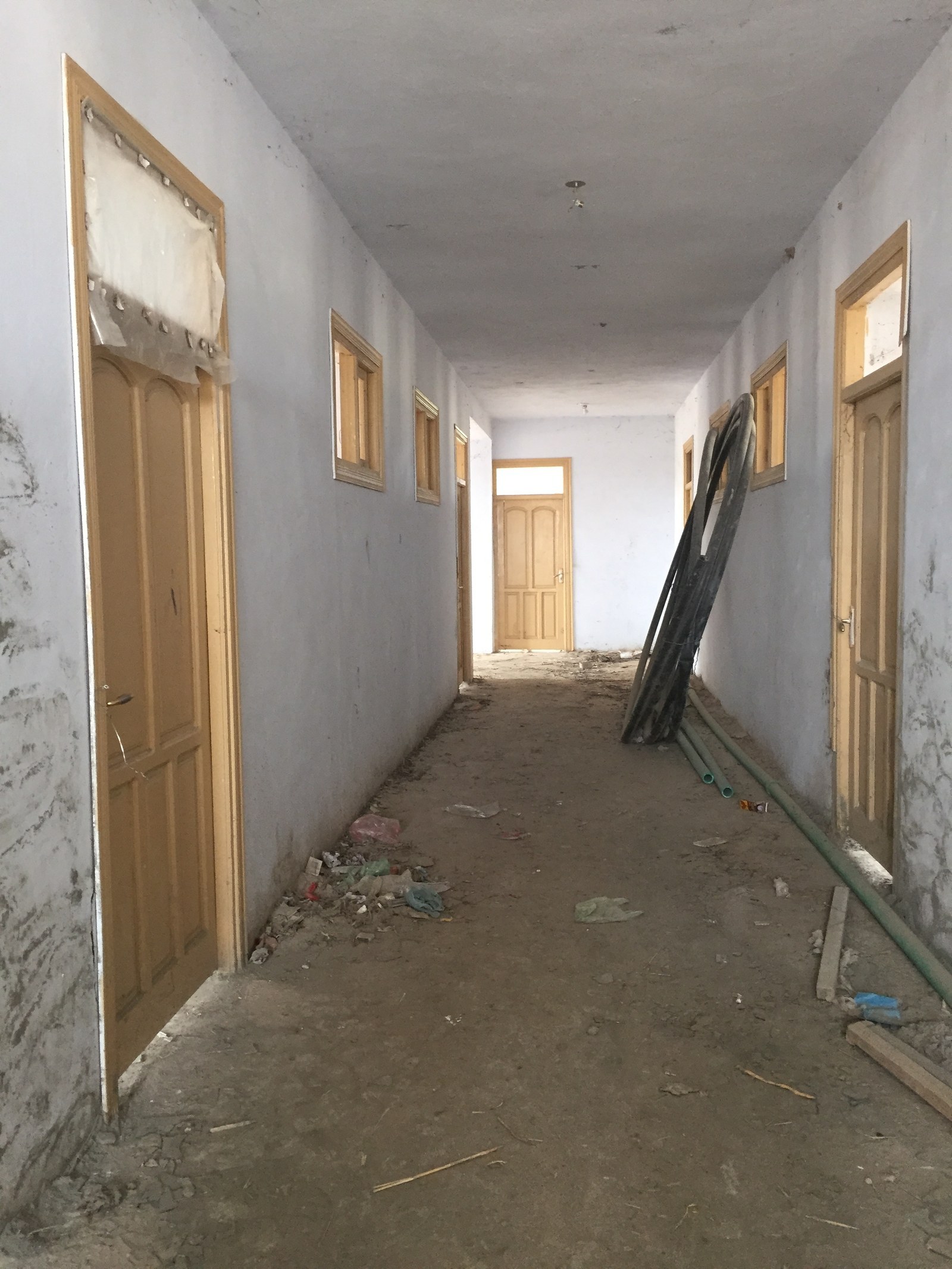
When the building was approaching completion in early 2012, Haider said, only about half of the nearly $100,000 contract awarded by the U.S. government had been used. But when he sought funds to build the boundary wall, he said, FKCC told him they didn’t have it yet and were waiting on the Americans to disburse the money. As the months went by, he said, it dawned on him that FKCC had siphoned off the construction funds and had no intention of ever paying him.
“Sometimes when I go to the company to see Fatay Khan, he hides,” Haider lamented.
At his Kandahar City offices, decorated with ornate chandeliers, tasseled drapes, and a framed ceremonial dagger, Khan denied he ever received the contract, insisting another company, Wali Beradaran Construction, won it instead. But according to an archived page of FKCC's now-defunct website, that company is one of Khan's partner firms.
When reached by phone, a man at Wali Beradaran Construction declined to give his name and said, “Never call this number again.”
Nazek did not respond to numerous phone calls and text messages.
An internal military intelligence assessment from 2011 reveals that the U.S. was well aware of Gov. Nazek’s business relationship with Khan:
“[Khan] acts both as Nazek's personal assistant as well as the representative for development projects in [the district]. Ostensibly this is because Nazek cannot trust anyone outside of his own family for security reasons,” the report notes. “In reality, working solely through Fatay Khan allows Nazek to control every aspect of development contracting and to maximize his own profits.”
Haider, who said he still hasn't received money to build the missing security wall, is effectively holding the entire project hostage. “I'm keeping it closed on purpose until I get paid,” he said.
The village children are the ones paying the price. Instead of having classes in the new school, they study in a cramped mosque across the street. On a visit by BuzzFeed News this March, about 50 children had spilled out onto the grass outside, where they sat rocking back and forth, reading the Qur’an.
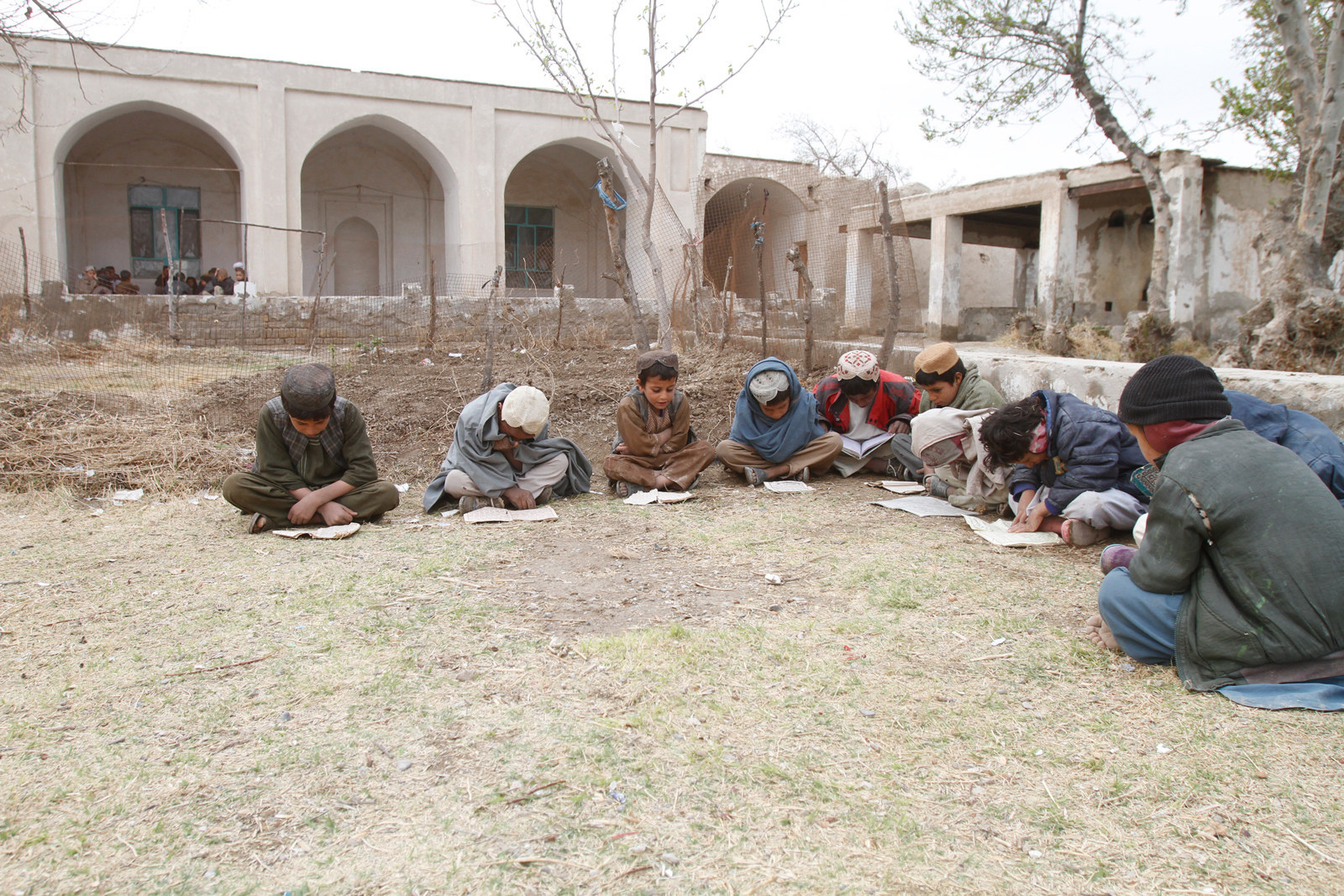
One of them was Haider's own 10-year-old daughter, Nasima, who said she wants to be a doctor. But at the mosque school, she and all the other girls get only a religious education from the local mullah. The little time a visiting UNICEF-funded teacher has for subjects such as math and reading is reserved for the boys, such as Nasima's brother Sanaullah.
When the pupils don't behave, Timorr Shah, an assistant at the mosque, has a skinny stick ready to strike. “I just want to scare them,” he explained, waving it in the direction of the children.
“If there is no beating,” one small student responded solemnly, “there is no learning.”
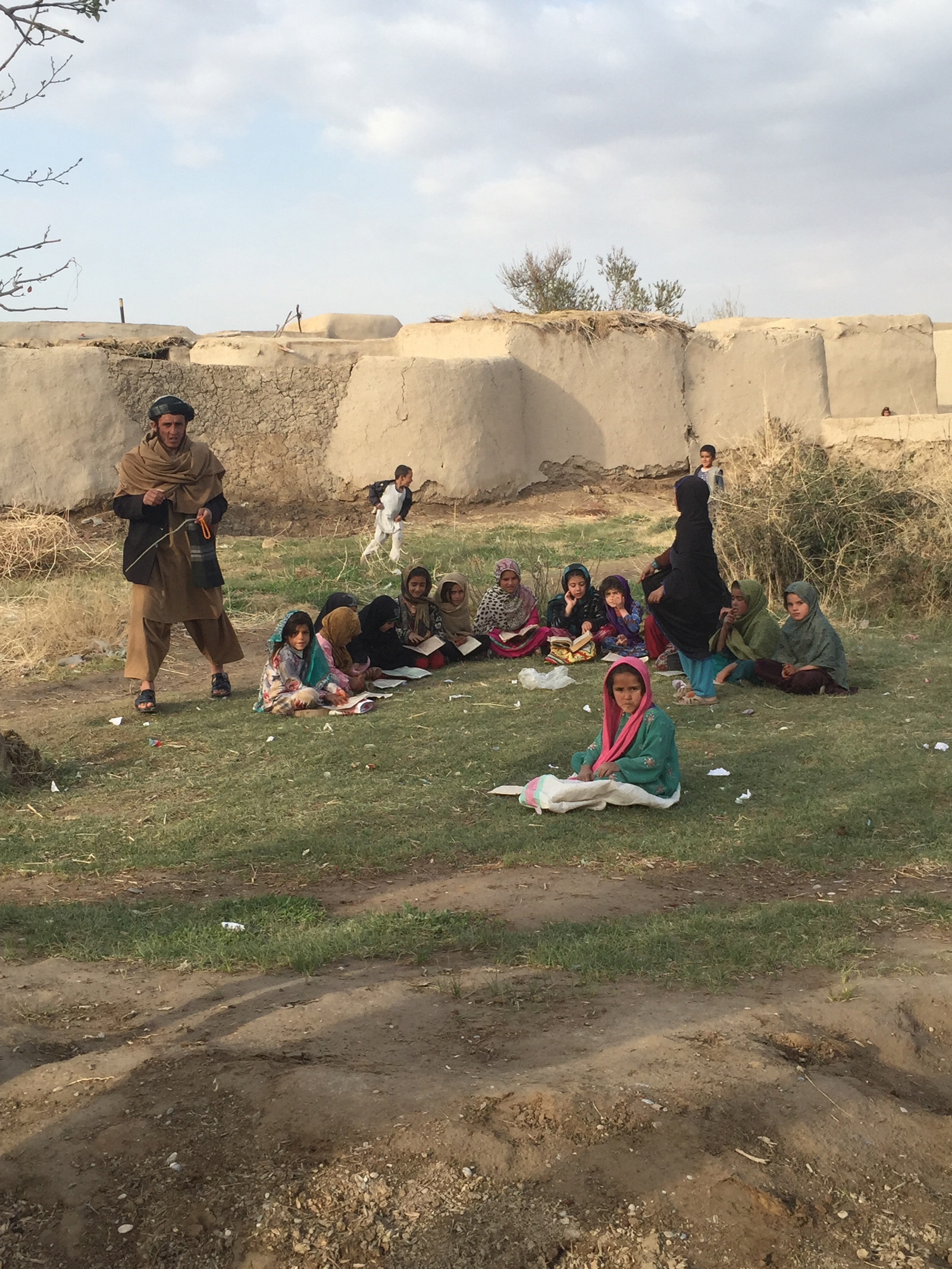
Ghost students, ghost teachers
U.S. officials have proudly proclaimed the number of students American tax dollars are educating. “Over three million Afghan girls and boys returned to school,” the State Department reported in 2003, “far exceeding the most optimistic target of 1.5 million children.” Two years later, USAID officials announced that there were five times as many children in school — 35% of them girls — than under the Taliban regime. In 2008, the count climbed to more than 6 million children, and by 2012, more than 8 million.
That same year, 2012, a military unit distributed supplies to the Sher Mohammad Hotak Primary School, located just a few miles down Highway 1 from DeNenno’s base. Fifty girls attended the school, according to the unit’s records. In photos the unit posted to Facebook, both girls and boys are seen smiling and collecting new backpacks. Together, USAID and the Pentagon have pumped more than $200,000 into the school.
But in an unannounced visit to the school this March, not a single girl was in attendance. Instead, the seven tents that made up the school were filled with boys, some of whom had no chairs or desks. They sat on rocky ground, fading backpacks emblazoned with the Afghan flag next to them.
It was that way across Afghanistan, with school after school visited by BuzzFeed News showing fewer students than were on the books. In 2011 and 2012, USAID sent monitors to many of the schools it had funded to check the number of students and other key information. Since then it has relied almost exclusively on data provided by the Afghan Ministry of Education to determine how many students and teachers are in schools. But no matter who came up with the official count, it often exaggerated the reality on the ground.
At the USAID-funded Mujahed Sameullah Middle School in Kunar province, for example, there were fewer than 50 boys, sometimes sitting two per classroom. That’s only about a fifth of the 274 boys USAID’s quality assurance monitors recorded in 2011 or the 264 the Afghan government told BuzzFeed News are currently enrolled. Overall, in the schools BuzzFeed News visited for which comparison data was available, official figures overcounted students by an average of nearly a fifth — and girls by about two-fifths.
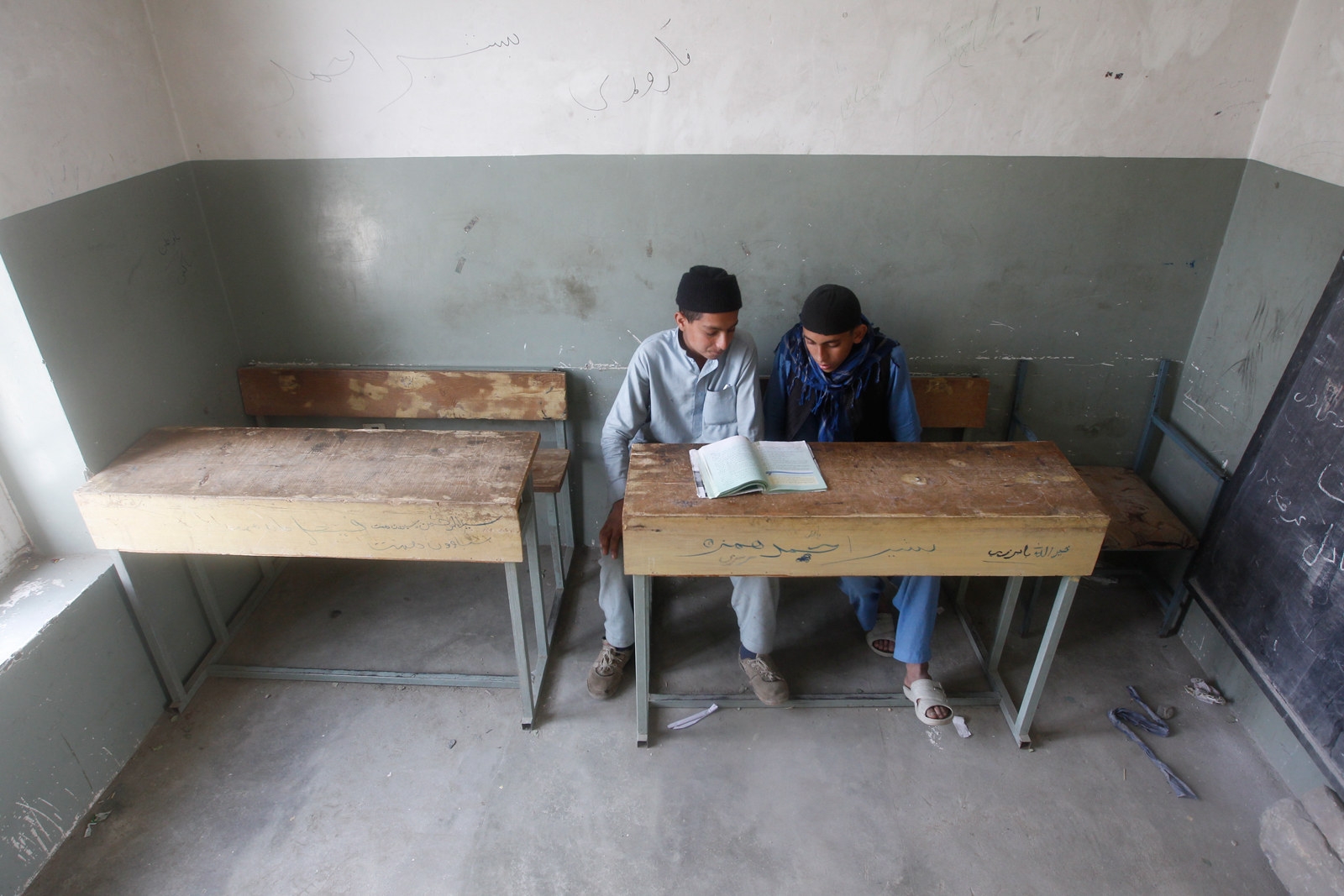
USAID’s own reports have also flagged exaggerated enrollment — for years. In a 2006 report, USAID found that one-fifth of students reportedly enrolled during the previous two years were “ghost students” — students who had dropped out but remained listed as enrolled.
Enrollment estimates, the report stated, “tend to exaggerate calculations of increases in enrollment in the primary and secondary school system and underestimate the inefficiency of the system since it ‘leaks’ up to one-fifth of the student population per year.”
In a written response for this story, the agency maintained that the report did not state that “enrollment was inflated, only that the number of students who dropout should also be considered.” A USAID spokesperson said he didn’t think the report had ever been made public.
The ministry and the U.S. government “didn't really like our analysis, and they never officially endorsed it,” said Craig Naumann, a statistician who helped calculate these findings when he was embedded within the Ministry of Education between 2003 and 2007. “Because in that specific politicized context, where high enrollment numbers, particularly high female enrollment, meant that all this fighting and all this money pumped into the country ended up achieving something.”
Former employees of both USAID and the Pentagon said that among U.S. officials working on education, it was common knowledge that the Afghan Ministry of Education padded statistics. Indeed, the ministry counts students as enrolled even if they have been absent for as long as three years.
In response to questions, USAID said that it takes seriously any allegations of falsified data and “will continue to work with the ministry to improve reliability.” It also said that beginning in 2012, the agency and other donors recommended that the ministry tighten that standard from three years to one. To date, the ministry has not done so. Still, USAID told BuzzFeed News that while it could not “be absolutely sure of all attendance numbers in all Afghan schools at all times,” in general it “is confident in overall attendance numbers provided by the MoE.”
But Elizabeth Royall, a U.S. liaison to the ministry in 2011 and 2012, said, “There was a lack of scrutiny. I would just report MOE numbers, and that’s what we went with.”
The U.S. just went with the ministry’s numbers for teachers, too. And those numbers were used to pay salaries — even when the teachers weren’t teaching.
BuzzFeed News obtained internal Ministry of Education data for 2011 that has never before been made public. For Afghanistan overall, the data showed 1,174 schools — almost 1 in every 12 — was a ghost school, an educational facility that the Afghan government publicly claimed was open but that was, in fact, not operating. In the provinces that are the most dangerous to monitor — and into which the U.S. poured the most aid money — that proportion soared. In Kandahar province, where DeNenno served, a full third of the 423 schools the Ministry of Education publicly reported as open in 2011 were not functioning, and in Helmand, it was more than half.
But teacher salaries continued to go to these ghost schools — and still do, according to numerous Afghan and U.S. sources. While the Afghan government puts in some of its own money to pay teachers, more than two-thirds of teacher salaries are provided through a World Bank fund, to which the United States is the biggest donor. The World Bank fund did not respond to requests for comment, but USAID said that World Bank financial controls guard against salaries going to ghost teachers.
And just as with ghost students, the U.S. government has known about ghost teachers for years. Back in 2005 and 2006, an internal education ministry task force calculated that at least $12 million in salaries were going to so-called ghost teachers annually, according to several former employees of the USAID contractors embedded in the ministry. A scathing, confidential 2013 USAID audit of the Afghan education ministry obtained by BuzzFeed News reveals that the United States had been injecting hundreds of millions of dollars for more than a decade into a ministry marred by an “inadequate payroll system” and lacking even the most basic auditing practices.
In some areas, the belief that ghost schools have enriched fat cats at the expense of Afghan children has stoked such widespread ire that American education aid is actually doing the opposite of what the U.S. intended: It’s turning locals against the government.
In mountainous Zabul province, members of the provincial legislature have been documenting ghost schools they say are being used to embezzle teacher salaries. The internal ministry data obtained by BuzzFeed News shows how dire Zabul’s ghost school problem is: Of the 234 schools that the ministry cited as open there in 2011, more than three-quarters were actually shuttered.
Mohammad Daud Gulzar, a provincial lawmaker, produced recent payroll documents showing regular payments to teachers at schools he and other local leaders say are closed.
The ghost schools, widespread and well-known, were the background to a news report from Zabul that aired on Afghan Tolo TV last year. Furious tribal elders had gathered to discuss the failing school system.
“Is there any school in Khaka?” the head of the provincial legislature asked the room full of elders. “No!” they shout back. “Is there any school in Ghawjai?” Again, they shout, “No!” The scene repeats several times, as more district and village names are thrown out.
At one point, the provincial police chief shouts out who he thinks are commandeering the payments: “Everyone knows the salaries of teachers come to the province, and then they go to the Taliban."
“But it could be nothing”
Despite Haji Lala’s demands, despite the roadside bombs and the beheadings, despite everything, Joe DeNenno’s school opened — and the children came in droves. And no wonder. It had grown organically, from informal tutoring to a temporary school to a permanent one. It had a mom in Pennsylvania organizing donations. And it had DeNenno, a guy who’s good with kids and wanted to make it work.
And his success bred more schools. “There's this thing called competition,” explained a senior officer deeply involved in U.S. education efforts in Kandahar. “So if one commander is seeing something in another commander's unit that's getting attention, he'll want to follow. It took on a life of its own. They started saying schools, schools, schools!”
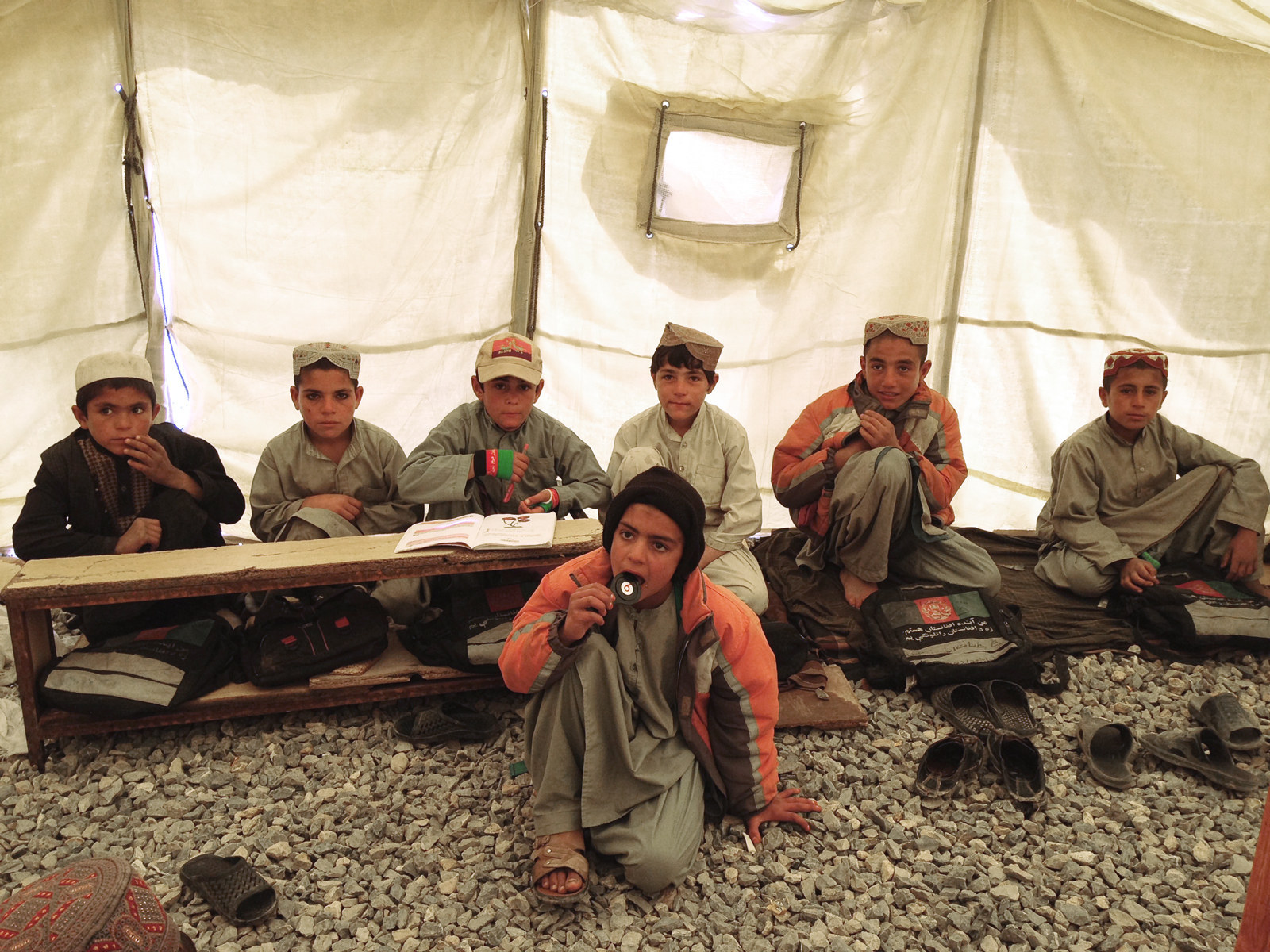
In 2011 alone, seven U.S.-funded schools opened in Zhari, each to a blitz of press attention. “It’s victory,” a U.S. command sergeant major said of one of the schools. “It’s winning.” But his school and two others were just temporary tent schools. Of the permanent school buildings, at least one — which cost nearly $300,000 to construct — is no longer operating because, according to Zhari’s education director, there are no children in the community to attend it.
“Saying I’ve built 50 schools doesn’t mean anything,” said DeNenno. “It’s such a farce to conclude that the number is considered a success.” Looking back, he said, “I do believe there was too much money pumped in way too quickly, especially in rural areas with little infrastructure to handle that.”
Military spending under the CERP program required very little paperwork for most projects. The point was to help win a war. But that flexibility means, quite literally, that the military does not know what it spent on education in Afghanistan, or what it got for its money. The military conceded that many CERP projects were not entered into “procurement database systems” but said it “does maintain extensive project records.” Last year, however, the Defense Department told the special inspector general for Afghanistan Reconstruction just how little it knew: For more than 40% of CERP projects, the Pentagon could not say who ultimately received its money.
Pressed by BuzzFeed News, the Pentagon said it could not provide an exact number of schools it actually built. It also could not say how the more than $250 million in CERP funding earmarked for education was actually spent. To try to drill down on those figures, BuzzFeed News filed a Freedom of Information request and obtained CERP funding records — but found that entire projects were missing, including Joe DeNenno’s permanent school.
“The CERP database was an absolute mess, literally a disaster,” one government official familiar with the records said. “Saying disaster doesn’t even do it justice.”
Since 2002, the United States has invested more than $1 billion to provide education to Afghan children. But the American government does not know how many schools it has built, how many Afghan students are actually attending school, or how many teachers are actually teaching. What’s certain is the numbers for all of those are far less than what it has been peddling.
Against this backdrop, Joe DeNenno considers his school a success.
Looking at recent pictures of the school he helped build, he sees the cracks in the building’s rotting exterior. He knows the roof leaks and there is no running water. He knows no girls are taught there.
“The building is deteriorating,” he admitted. “But it could be nothing.”
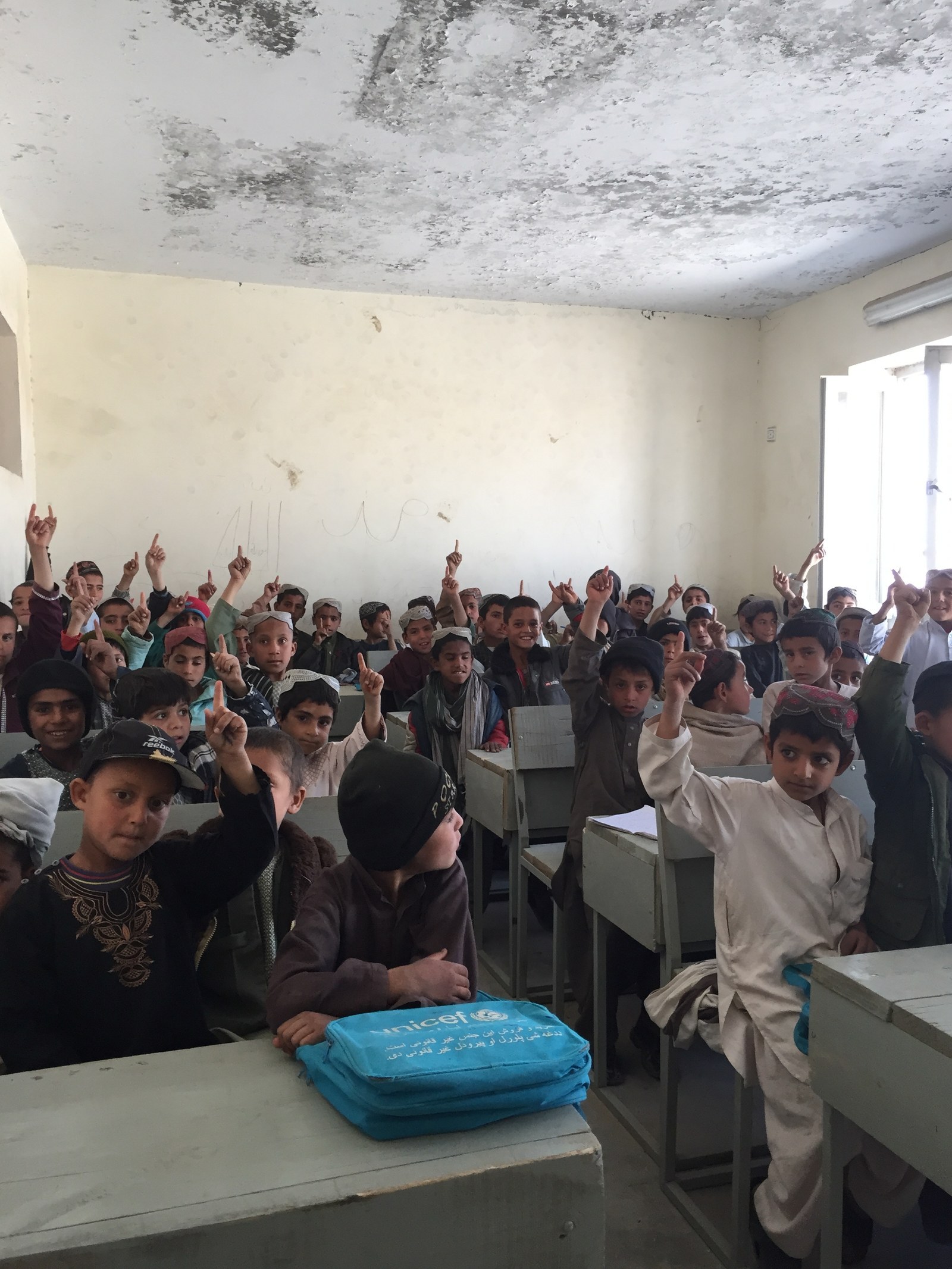

Bakhtyar Zadran contributed to this story.
